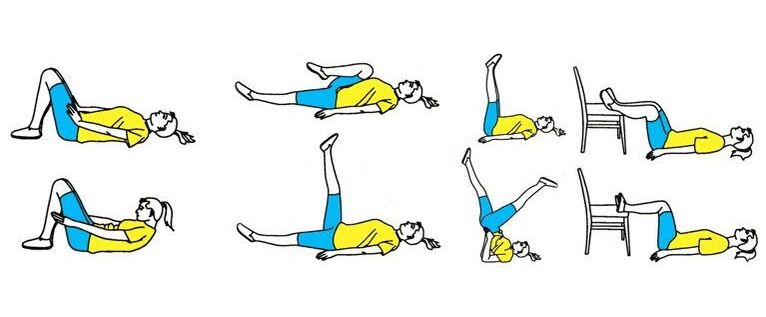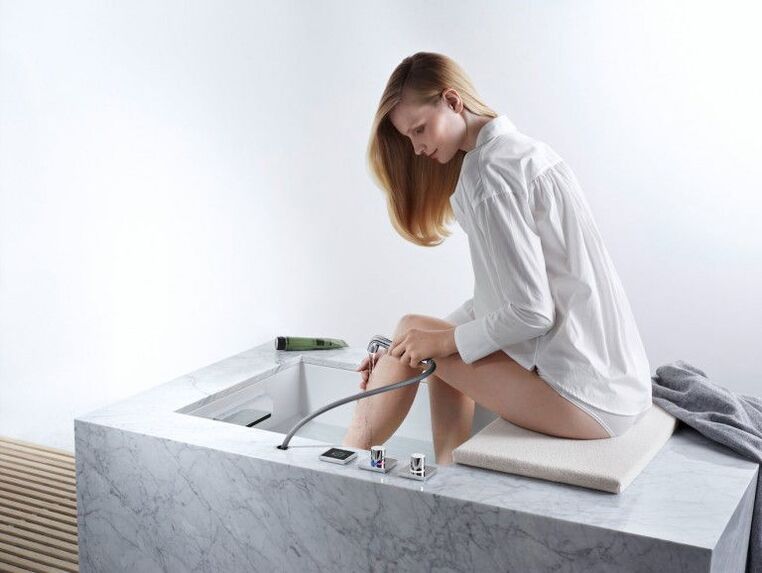Among the many problems faced by modern women, varicose veins are not the last. Regularly performing simple exercises for varicose veins of the legs can help in the early stages of the disease. Of course, the problem can be solved cardinally - with the method of surgical intervention, but often therapeutic physical activity will be sufficient, it all depends on the degree of development of the disease. Before you start the fight against varicose veins, it is recommended to learn more about this disease and only then decide on the need for exercise therapy.

Types of varicose lesions
Medicine divides varicose veins into:
- congenital;
- won.
Both forms are expressed in varicose veins of the legs. Acquired varicose veins are more commonly seen in women whose work is accompanied by a large or prolonged leg load. For example, the disease often develops between vendors and teachers. These occupations involve a woman standing for a long time, so the load on the foot may not be excessive but constant, which in the end often ends with the appearance of pain and the development of varicose veins.
Congenital varicose veins are inherited from grandmother to mother and from her to her daughter. If the older generation suffers from varicose veins, then the probability of its occurrence in girls is very high. To prevent the appearance of inherited varicose veins of the legs, special exercises for varicose veins of the lower extremities help. By performing physical exercises regularly, a woman can not only prevent the onset of the disease, but also reduce external manifestations by dilating the veins in the legs.
It happens that varicose veins in a woman are not yet visible, but the risk of its occurrence exists. In this case, it is recommended that you regularly engage in certain physical gymnastics. The same exercises are also suitable for the initially identified varicose veins.
You should know that gymnastics for varicose veins of the lower extremities includes elements that require you to lie on your back with your legs up. In addition to fighting varicose veins, the proposed set of exercises helps strengthen the abdominal muscles.
Prevention and treatment of leg veins
With the risk of disease onset and in the early stages of the disease, the following set of exercises is recommended.
- Slowly raise your leg up as you exhale, followed by holding it upright. This is followed by a slow lowering of the leg during breathing. In the first exercise you may feel a tension in the lower leg, which is given by a slight squeezing of the leg. The exercise is performed up to twenty times and four approaches are repeated while the legs are alternated. Meaning of exercise: when the leg is raised, blood flows more actively from the pockets of the veins, and when the leg is lowered, the veins fill sharply with blood. This type of training for leg veins works effectively against varicose veins.
- Lying down, make circular motions with your feet. The movement of the foot should be smooth and without haste, while the lower part of the foot will be stretched in one direction. Initially, the leg is extended to the floor, but after a few movements, it can be raised slightly and the exercise continued, keeping the leg in weight. This foot movement is good for blood flow.
If you are overweight, then the load on the walls of the veins increases significantly and this obviously provokes the development of varicose veins. Often the doctor recommends taking blood-thinning medications to treat varicose veins, which facilitate the work of the veins. There are many such drugs, so it is not categorically recommended to take them yourself. It is better if an experienced doctor selects the funds needed for you.
In the prevention of varicose veins, it is more important to strengthen the muscular walls of the veins, in which they are relatively thin. This can be achieved not only by exercising or undergoing a complex of exercise therapy. Against the weakening of the walls of the veins, a regular shower with contrast can help a lot. Alternative exposure to hot and cold water perfectly trains the leg veins.

There are simple therapeutic exercises for foot work against varicose veins.
| action | quantity | Benefit |
|---|---|---|
| On the feet, transfer body weight from the heel to the foot and vice versa. | 10-12 times | This exercise makes the lower leg function, resulting in a more active movement of blood through the veins; |
| On your feet, get up on your toes and slowly sit across the leg. | 10-12 times | This exercise, in addition to developing veins, allows you to strengthen the muscles of the lower leg and improve the shape and beauty of the legs. |
The work in which a woman has to sit constantly can also lead to the development of this disease. In this case, a slightly modernized lift on the toes will help. The only difference with the previously recommended exercise is that you need to get down on your heels as tightly as possible and you can not lift the heel too high.
Running, cycling or playground?
Physiotherapy exercises can recommend many different exercises to train the veins. Quiet running, rope jumping and other exercises will work perfectly against varicose veins. Cycling also helps a lot, but here is a small detail. Foot vein training will only be more active if the seat is positioned as high as possible so that only the toe can reach the bottom pedal. When riding with this bike configuration, the lower part of the leg is actively reduced, increased pressure is exerted on the veins, which makes the blood circulate better.
If you find that with the expansion of the veins of your legs began to appear clearly, then it is better not to delay, but immediately consult a doctor. He will be able to provide you with an effective exercise plan if needed. Only the right exercises will help you keep your leg veins in perfect shape.
Among the many different programs and sets of exercises created to combat varicose veins, one can single out Dr. 's approach. Bubnovsky, whose clinic studies kinesitherapy as a means of combating a variety of diseases. To prevent varicose veins and treat the disease that has already appeared, the clinic specialists develop individual exercise programs that fully take into account the individual characteristics of the patient.























